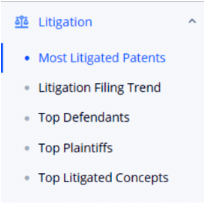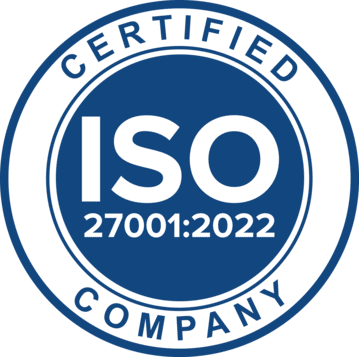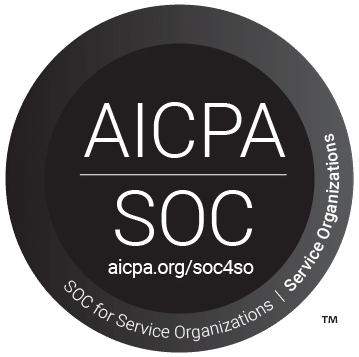Share
Share

Patent Litigation Analysis is an Important Part of Your IP Landscape, Here’s Why
Patent litigation is an important tool (and usually the last resort) for individuals or businesses, to prevent infringing products from being commercialized and negatively impacting their own markets. According to recent estimates, 6000 IP litigation cases are reported each year and so it’s important for IP owners to keep themselves updated with the patent litigations trends in their technology areas.
Technology Landscapes (or Patent/IP Landscapes) is an exercise done by companies when evaluating a new or adjacent technology area to invest/operate in. IP landscapes give you a snapshot of the innovation that exists in a technology area. They help you make the right choices before entering a new technology area, deciding the future course of action of your current R&D efforts or finding complementary use-cases or partners.
More than often, patent landscapes focus more on the technology and market aspects and less importance is placed on litigations. Let’s take a look at why you need to include litigation analysis in your landscape assessments.
Know who’s litigating in the space
It is important to know who is asserting their patents in the technology space that you are looking at. Patents are increasingly asserted by non-practicing entities (NPEs) and knowing which ones are operating in the area you are looking at is an invaluable input to your go-to-market strategy. Also having such a clear view of potential legal challenges in advance helps companies plan their research, innovation, and go-to-market strategies better.
Know which areas of the technology pose a higher risk of litigation
Analyzing the patents behind the litigations can give you an insight into which sub-technology areas (components, methods, materials etc) are prone to litigation. Using this information, you can craft the right technology strategy or form the right partnerships in advance so as to mitigate these litigation risks well before they occur.
Design the right out-licensing or commercialization strategy for your patents
For IP owners, litigation analysis can provide you with information on finding the right partners for licensing and monetizing your inventions. For example, cross licensing with a competitor in advance can help avoid an expensive litigation down the line. Many companies also choose to assert their patents by licensing or selling it to an NPE. Another set of companies choose to pool together their patents in order to create a less litigious environment that can encourage innovation. Decisions on all such strategies start with knowledge of the litigants and types of litigations happening in space.
Building a strong IP fence around your products
If you already have products that operate, then litigation analysis can help you identify which areas in your products are at greater risk of litigation. Using this knowledge, you can decide if you need to strengthen your IP portfolio by way of in-licensing or acquisition of related patents that can give you better leverage when threatened with litigation. Having a strong patent portfolio helps a company stand firm if faced with lawsuit threats and opens opportunities for cross-licensing, reducing legal risks.
Increasing threat of Patent Litigation in most technology areas
A recent study by PWC suggests that patent litigations are set to increase in the coming years. Key factors contributing to these trends:
- NPE Engagement: NPEs, entities holding patents without directly using the associated technologies, have seen an uptick in their patent litigation cases. Recent data shows NPE cases account for over half of all cases, impacting especially smaller law firms and a diverse range of companies.
- Technology-Driven Litigation Surge: Recent years have witnessed a spike in patent litigation in emerging tech sectors, notably in neural networks and AI. With AI’s rapid evolution, businesses are in a rush to stake their claim, leading to a surge in legal confrontations.
- Changing Landscape of Patent Lawsuits: Patent lawsuits increased during Covid years and have recently seen a dip in 2022. While it is too early to determine if this dip is a continuing trend, it is offset by the rise in Inter Partes Review (IPR) patent case filings. In US, the Patent Trial and Appeal Board (PTAB) is now more popular than federal courts for litigating patent disputes and IPR is the route taken by many companies.
All these factors make it even more important for you to include litigation analyses in your IP landscapes.
PatSeer offers a host of litigation search and analysis tools designed for technology professionals. Covering patent Litigation and Opposition case data from more than 9 jurisdictions, the search functionality lets you find exactly what you’re looking for. Search using criteria that matter most to you—whether it’s the defendant’s name, case number, filing date, presiding judge, or current case status. The charts cover litigation trends, top plaintiffs & defendants and the most litigated patents and technology concepts.
Increasing threat of Patent Litigation in most technology areas
A recent study by PWC suggests that patent litigations are set to increase in the coming years. Key factors contributing to these trends:
- NPE Engagement: NPEs, entities holding patents without directly using the associated technologies, have seen an uptick in their patent litigation cases. Recent data shows NPE cases account for over half of all cases, impacting especially smaller law firms and a diverse range of companies.
- Technology-Driven Litigation Surge: Recent years have witnessed a spike in patent litigation in emerging tech sectors, notably in neural networks and AI. With AI’s rapid evolution, businesses are in a rush to stake their claim, leading to a surge in legal confrontations.
- Changing Landscape of Patent Lawsuits: Patent lawsuits increased during Covid years and have recently seen a dip in 2022. While it is too early to determine if this dip is a continuing trend, it is offset by the rise in Inter Partes Review (IPR) patent case filings. In US, the Patent Trial and Appeal Board (PTAB) is now more popular than federal courts for litigating patent disputes and IPR is the route taken by many companies.
All these factors make it even more important for you to include litigation analyses in your IP landscapes.

Conclusion
As litigations make their way into more and more technology areas, it’s important to include patent litigation analysis in your technology landscapes. When launching new products or entering new technology areas, litigations analysis will help you mitigate these risks in advance.




